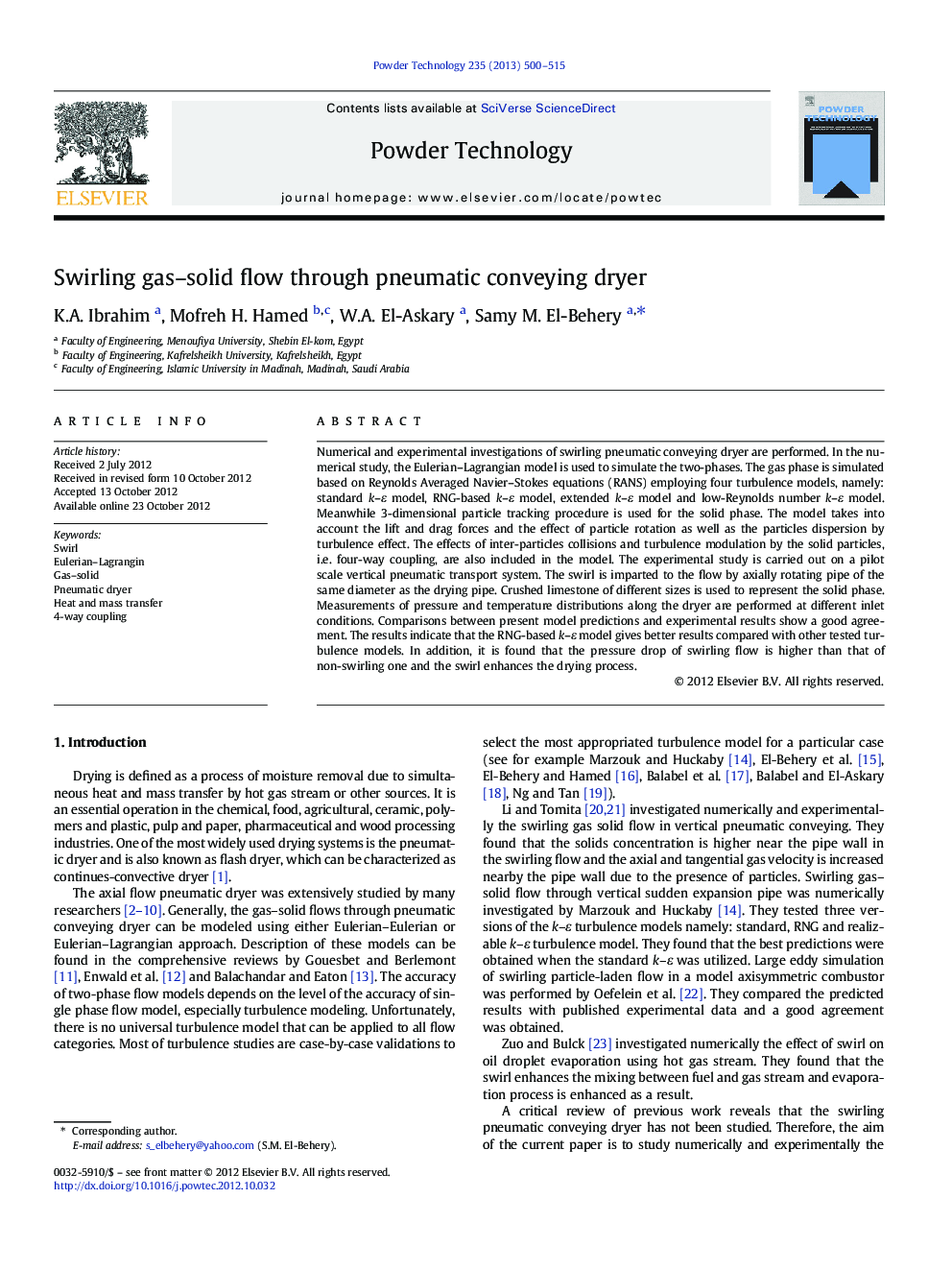| کد مقاله | کد نشریه | سال انتشار | مقاله انگلیسی | نسخه تمام متن |
|---|---|---|---|---|
| 236672 | 465682 | 2013 | 16 صفحه PDF | دانلود رایگان |

Numerical and experimental investigations of swirling pneumatic conveying dryer are performed. In the numerical study, the Eulerian–Lagrangian model is used to simulate the two-phases. The gas phase is simulated based on Reynolds Averaged Navier–Stokes equations (RANS) employing four turbulence models, namely: standard k–ε model, RNG-based k–ε model, extended k–ε model and low-Reynolds number k–ε model. Meanwhile 3-dimensional particle tracking procedure is used for the solid phase. The model takes into account the lift and drag forces and the effect of particle rotation as well as the particles dispersion by turbulence effect. The effects of inter-particles collisions and turbulence modulation by the solid particles, i.e. four-way coupling, are also included in the model. The experimental study is carried out on a pilot scale vertical pneumatic transport system. The swirl is imparted to the flow by axially rotating pipe of the same diameter as the drying pipe. Crushed limestone of different sizes is used to represent the solid phase. Measurements of pressure and temperature distributions along the dryer are performed at different inlet conditions. Comparisons between present model predictions and experimental results show a good agreement. The results indicate that the RNG-based k–ε model gives better results compared with other tested turbulence models. In addition, it is found that the pressure drop of swirling flow is higher than that of non-swirling one and the swirl enhances the drying process.
As the flow Reynolds number (based on mean axial velocity of the flow) increases at constant rotational speed of the pipe, the swirl strength and Rossby number decrease. As a result, the particles move in straighter paths and thus, the particles residence time decreases due to the higher axial momentum.Figure optionsDownload as PowerPoint slideHighlights
► Heat and mass transfer process in swirling pneumatic dryer is investigated numerically and experimentally.
► The Eulerian–Lagrangian approach is utilized to simulate the process.
► Four turbulent models are tested for swirl prediction.
► The RNG based k–ε model was found to perform better than other models.
► The drying process is enhanced by swirl.
Journal: Powder Technology - Volume 235, February 2013, Pages 500–515